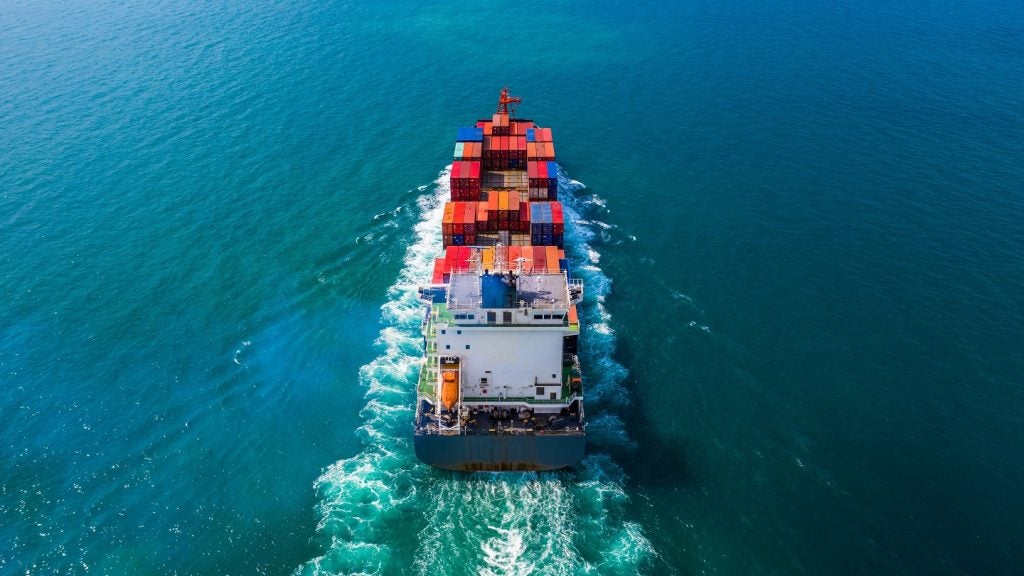
Malta’s insurance industry grew in terms of gross written premium from EUR858.6 million (US$1.2 billion) in 2009 to EUR1.4 billion (US$1.9 billion) in 2013. Growth was fuelled by the favourable regulatory framework, stable economic development and an increase in exports. It was also supported by the generally business-friendly environment, which includes low taxes and direct access to other EU markets. Therefore, the insurance industry is projected to grow to EUR2.2 billion (US$3.1 billion) by 2018.
In collaboration with the Malta Financial Services Authority (MFSA), the Maltese government provides a strong regulatory framework for global investors. The MFSA as the sole authority for all regulatory aspects of the financial services sector is also responsible for the insurance industry. Global investors, especially banks and insurers, find the lack of regulatory burden and the single governing agency especially attractive. As a result, Malta is seen by global insurers as a gateway to other EU member states, enabling them to underwrite business anywhere in the EU thanks to passporting rights. This prompted six new insurance providers to enter the industry.
Malta is also one of the best places in the EU to do business, due to its low tax regime, and business-friendly legislative framework and environment. The country has experienced no major natural disasters in the last 30 years and was recognized by the UN as one of the world’s safest places in 2013.
Malta is also an attractive destination for captive and reinsurance businesses. Since 1990, it has established itself as a stable and renowned global financial services centre, and the insurance industry’s contribution is significant. The MFSA works towards innovation and development in Malta’s insurance industry. In December 2013, the regulator implemented RSPV legislation, covering the establishment and supervision of RSPVs in the country for catastrophe bond, sidecar, collateralised reinsurance and transformer structures.
At the end of 2013, 60 insurance providers were licensed to operate in Malta, of which there were 44 non-life, 7 life, 2 composite and 7 reinsurance companies. The 60 insurance providers include 11 affiliated insurance undertakings and 10 protected cell companies (PCCs). The industry is highly concentrated, especially among long-term and life insurers, with the three leading insurers accounting for 84.0% of the segment in 2011, as compared to 97.1% in 2010. The non-life segment was moderately concentrated, with the top three non-life providers accounting for 43.0% of the segment in 2011, as compared to 56.5% in 2010.
Life insurance is the second largest segment in the Maltese insurance industry, accounting for 23.6% (or EUR336.2 million/US$445.7 million) of the industry’s gross written premium in 2013, while non-life accounted for 69.7%. Personal accident and health insurance contributed another 6.7%, or EUR95.3 million (US$126.3 million). Life insurance penetration rose from 3.7% in 2009 to 4.8% in 2013, and is expected to reach 5.4% by 2018.
How well do you really know your competitors?
Access the most comprehensive Company Profiles on the market, powered by GlobalData. Save hours of research. Gain competitive edge.

Thank you!
Your download email will arrive shortly
Not ready to buy yet? Download a free sample
We are confident about the unique quality of our Company Profiles. However, we want you to make the most beneficial decision for your business, so we offer a free sample that you can download by submitting the below form
By GlobalDataIndividual whole life was the dominant category in the life segment, accounting for 88.9% of the segment’s total written premium in 2013 with a value of EUR299.0 million (US$396.4 million).
Outlook
Despite being comparatively small by global standards, Malta’s GDP registered stable growth in recent years. GDP at current prices grew from US$.6.0 billion in 2009 to US$7.0 billion in 2013, at a CAGR of 4.2%, and the European Commission (EC) expects the economy to continue on its growth path during 2014 and 2015. According to the International Monetary Fund (IMF), GDP per capita grew from EUR14,400.1 (US$20,056.4) 2009 to EUR16,835 (US$22,322.8) in 2013. This should lead to increased individual spending, supporting the growth of the life segment. However, a relatively high unemployment rate of 6.3%, slightly down from 6.9% in 2009, remains a negative factor, and the effects of the debt crisis and economic conditions in the EU may also hamper insurance business in Malta for the near future. The country’s financial deficit also calls into question the sustainability of its pension system, which could affect the life segment. Though the economy is expected to improve, the EC has recommended that Malta enters an Excessive Deficit Procedure to support its pension system.
Difficult demographics
Malta’s demographics represent something of a double-edged sword. Its population is one of the smallest in the EU, and its growth was fairly flat, from 405,165 in 2009 to 411,277 in 2013, and it’s expected to grow at only a CAGR of 0.3% over the next few years to 416,381 in 2018. The small size of the population is not conducive for domestic insurance, especially motor and life insurance. These figures are particularly unfavourable, however, for individual whole life and annuity insurance which require a large client base for expansion, and may discourage global insurers.
While fairly stagnant in terms of numbers, the population is also ageing. The percentage of people aged above 65 years rose from 14.5% to 17.2% in 2008-2013, and this is expected to reach 20.0% in 2018. This should underpin increased awareness of and demand for post-retirement savings products, driving growth in the life segment.
Margins under pressure
Maltese life insurance providers’ growth and profit margins are likely to remain under pressure due to mounting legislation, rising combined ratios, and the delicate economic environments in the EU and other leading economies.
Solvency II is a fundamental reform of capital-adequacy requirements and risk-management standards. European policymakers are aiming to implement this new regulation in all EU member states along with Norway, Liechtenstein and Iceland by 1 January 2016.
This will create an additional regulatory burden for insurers and increase minimum capital requirements, thus discouraging new and small insurers from entering the Maltese insurance industry. The combined ratio of life insurance providers is likely to increase from 70.8% in 2013 to 77.5% in 2018 due to significant expenditure on commissions and expenses, signalling lower earnings for life insurers. However, the stringent regulations are expected to increase consumer confidence and benefit the country’s insurance industry in the longer term.
In addition to this, the market is increasingly occupied by major companies such as Middlesea, GlobalCapital, HSBC Life (Malta), MSV Life and Citadel insurance. These pressures may play out in a positive manner over the long term, driving efficiency internally and the adoption of better practices overall.
Friendly tax regime
Malta offers business-friendly conditions for global insurers, including low taxes on insurance premiums, corporate income, capital gains and payroll. Operating and administrative costs are also very favourable. However, falling income tax rates are also expected to have a negative impact on the growth of life insurance, as the benefits of policies offering tax relief will reduce.
Insurers go virtual
According to World Bank statistics, the total number of internet users in Malta in 2012 was 292,856, or 70.0% of the population.
This encouraged insurers to rethink how to access target customers and provide advanced support. Product marketing is increasingly shifting to online, and insurers redesign, update and launch new user-friendly websites and mobile apps to retain customers and acquire new ones. For example, Atlas and Citadel have redesigned their websites or developed new ones, while MSV life has introduced a new mobile app, enabling customers to purchase insurance online and receive quick responses to queries.
Distribution channels
The distribution of life insurance products is primarily led by the bancassurance, direct marketing, agencies, brokers, and e-commerce channels. Life insurers mostly depend on bancassurance for selling new life policies, which accounted for 54.2% of the gross written premium from new business in 2013.
The value of new business gross written premium through this channel increased from EUR98.3 million (US$136.6 million) in 2009 to EUR106.9 million (US$141.8 million) in 2013. This is projected to reach EUR148.2 million (US$208.8 million) by 2018. The number of new policies sold through bancassurance increased from 290,087 in 2009 to 306,549 in 2013, and is projected to hit 399,145 by 2018. Beyond that, its share should decrease as insurers focus more on direct marketing, agencies and e-commerce.
After bancassurance, Maltese life insurers depended on direct marketing. The value of the new business gross written premium collected through this channel jumped from EUR4.1 million (US$5.8 million) in 2009 to EUR59.0 million (US$78.3 million) in 2013. The share of direct marketing is expected to increase from 30.0% in 2013 to 34.2% in 2018. The number of new policies sold through direct marketing increased from 12,229 in 2009 to 172,456 in 2013, and is expected to reach 330,899 by 2018.
All major life insurers, such as Middlesea, GlobalCapital, HSBC Life (Malta), MSV Life and Citadel Insurance, are focusing on direct marketing, which includes company offices and distance-selling such as e-mail, direct mail and phone.
Agencies were the third most popular distribution channel. The value of new business gross written premium collected through agencies increased from EUR17.2 million (US$23.9 million) in 2009 to EUR23.8 million (US$31.6 million) in 2013. Agencies accounted for 12.1% of the gross written premium in 2013, which is expected to reach 15.4% with a gross written premium value of EUR49.5 million (US$69.7 million) in 2018. The number of new policies sold through agencies increased from 50,765 in 2009 to 66,131 in 2013.
The gross written premium registered by insurance brokers increased from EUR3.4 million (US$4.8 million) in 2009 to EUR4.0 (US$5.3 million), accounting for a 2.0% share, in 2013.
The number of new policies sold via e-commerce grew significantly from 973 in 2009 to 9,318 in 2013, boosted by increased internet and smartphone penetration.
Insurers such as Atlas, Citadel, and MSV Life have updated their websites and introduced mobile applications for desktop and mobile internet users. The increased internet use and innovative techniques adopted by insurers are expected to support further high growth of the e-commerce channel.
The channel is expected to grow from EUR3.3 million (US$4.4 million) in 2013 to EUR7.5 million (US$10.5 million) by 2018 at a CAGR of 17.6%.
Porter’s Five Forces Analysis
Bargaining Power of Supplier: Low
Capital providers such as banks and other financial institutions are the main suppliers to life insurance companies. The five largest insurers operating in the Maltese life segment were Middlesea Insurance, GlobalCapital, HSBC Life (Malta), MSV Life and Citadel Insurance. They are either tied with banks, or are themselves financial institutions with strong capital bases, reducing their dependence on capital providers. The bargaining power of capital providers in Malta is, therefore, low.
Bargaining Power of Buyer: Medium
The Maltese life segment comprises only individual buyers for individual and unit-linked products. The bargaining power of the purchasers of life insurance products is medium, as they can choose between products from nine insurers. The population of Malta numbers 411,277, growing at a CAGR of 0.4% in 2009-1013, which is very low, creating a small customer base.
Barriers to Entry: Medium
There are no regulatory barriers to entry in the life segment, and foreign insurers have a strong presence in the country. However, the long-term potential is low due to the small population and economic deficit. The market is also concentrated, with the four leading life insurers accounting for 52.6% of the gross written premium in 2012.
Intensity of Rivalry: High
The intensity of rivalry is high among life, with a relatively small customer base targeted by nine life insurers, both foreign and domestic. Low levels of differentiation between products and services also make it difficult for new entrants to gain a foothold.
Threat of Substitutes: Low to Medium
There is no direct substitute for life insurance in Malta, as individual life and unit-linked policies dominate the segment. Life insurers offer a range of products to meet diverse customer requirements. However, the financial crisis and the debt crisis in Europe led to a decline in consumer confidence, driving customers to invest in low-risk securities such as government bonds.







